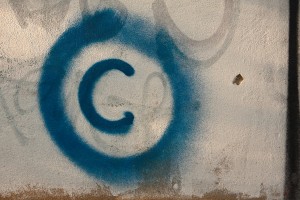Plagiarism on the Internet
In an earlier blog article we have looked at plagiarism in general and how to avoid at least unintentionally plagiarizing someone else’s work in a thesis or otherwise educational or scientific work. However, such instances aren’t the only occasions where plagiarism arises almost daily.

Nothing has made plagiarizing and stealing other people’s work and ideas as easy as the internet. In this case, it doesn’t even have to be the written word that is merely copy and pasted into website content or a blog article. It goes way further. Images, music, videos, sketches, graphics, and whole designs and codes can easily be saved, copied, or imitated.
On the other hand, it has never been as easy to put a link to the original source, artist, or producer as it is now. A source link lets people know where good content came from by crediting the original author, while bad content can easily be noticed if the link refers to a questionable source. The users or readers then can decide for themselves if they want to trust content that comes from a for them questionable or not reliable source.
Yet, many people still display photos, artwork, or videos as their own by not putting a proper source link which would merely take a split second to do.
Plagiarism on the Internet
There are a few common forms of plagiarism that are widely common on the internet. Such are:
- Posting pictures from other websites on your own page or blog
- Using video footage for fan, tribute, or music videos
- Using copyright protected music for your videos
- Posting videos or images found on the web on social media profiles
- Using photographs or images to create website designs, banners, social media headers, etc.
However, the lines tend to blur – especially on social media. Could tributes of famous music videos or movie scenes be seen as plagiarism? Or copying the composition and color scheme of an existing graphic for your own?
Many seem to draw the line when it comes to the “value” of the shared – or plagiarized – content. Others draw the line when it comes to personal use vs. commercial usage of videos and pictures. One could always refer to the copyright laws denoted by the government (for example in the US), yet the internet is all and foremost an international playground, and American copyright laws may not apply to a user from India or Switzerland.
Be on the save side
Especially on social media and private usage, when the case of plagiarism isn’t entirely clear, giving credit to the original source is a matter of decency and respect. It may happen that there is no source t be found if you take a picture from Google or find it on your hard drive, yet that doesn’t mean that you should claim it as your own – or in the worst case put your own watermark on it (cf. this example someone put on Flickr).
If the source is known though, it should be possible to take a few seconds to credit the original artist. In most cases, nowadays, there is even the possibility to share content from the source directly with your Facebook friends, Twitter followers, or via email. Using such in-built sharing methods guarantee that whoever sees the content on your profile will know of the original source.
If you wish to use a photograph or image, video footage or citation of someone else, there’s always the option to ask the respective contributor for permission as well. A quick question via email or Twitter doesn’t cost anything and is equally fast done.
And last but not least, there is still content on the internet that is free to use in the public domain. Open Source images and content created with the certain creative commons licences can be used, shared, and even altered following certain restrictions.
